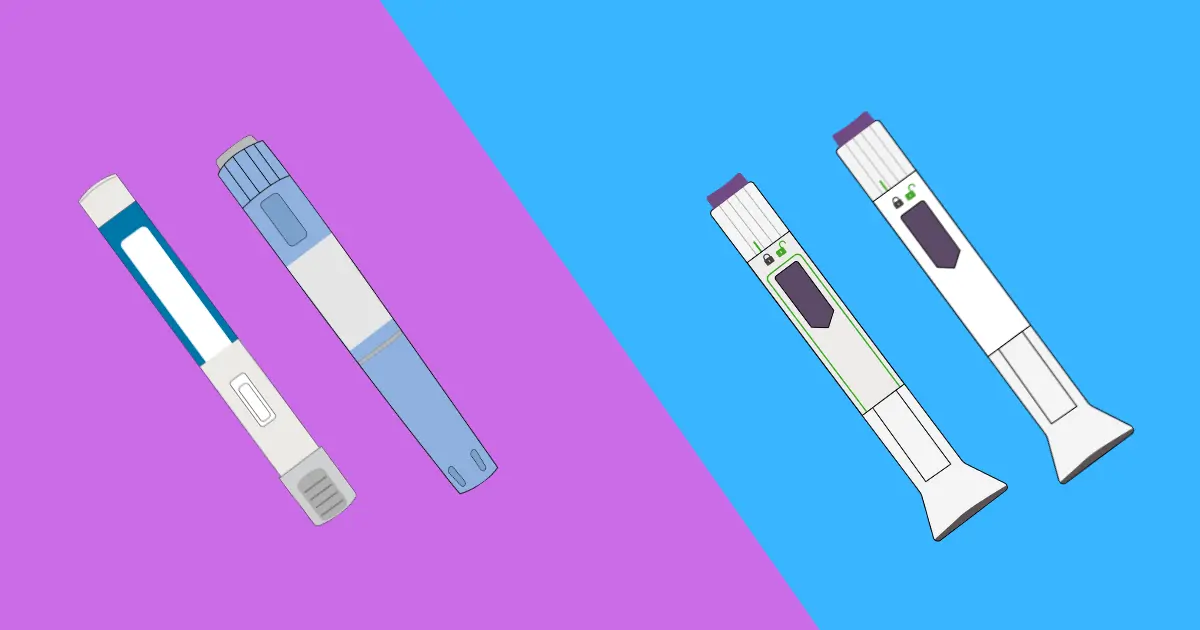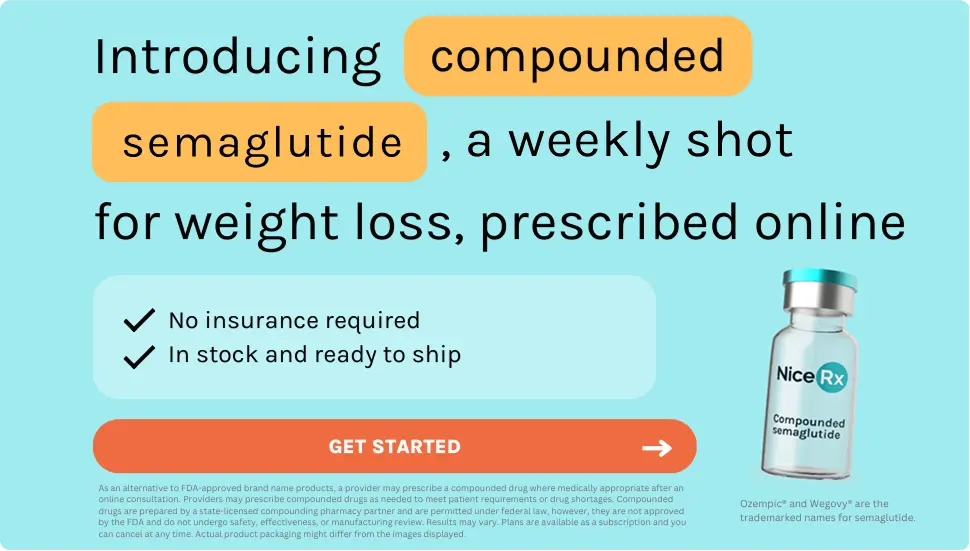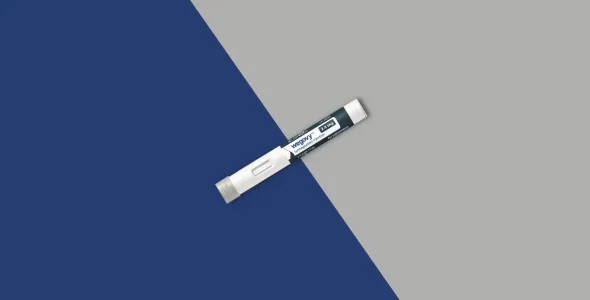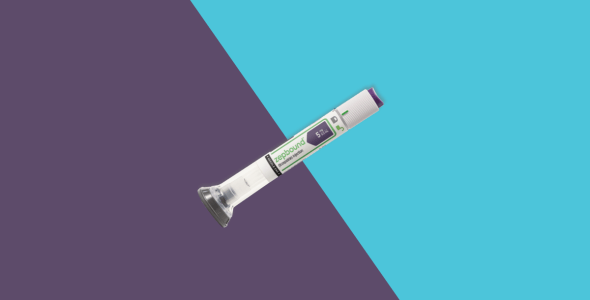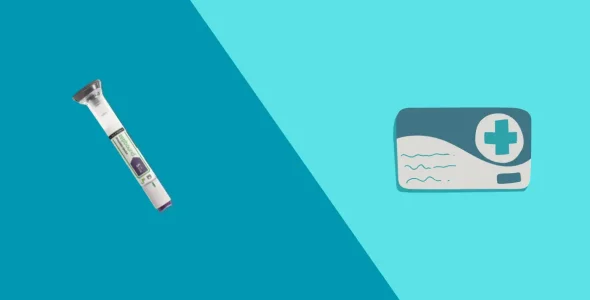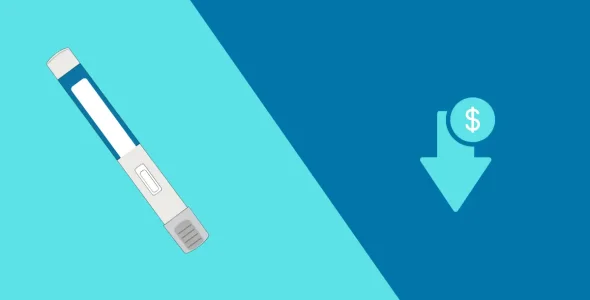Weight loss injections cost: Comprehensive guide to prices, insurance and savings
Struggling to lose weight and considering injections? You're not alone—but how much do they really cost?
Key highlights
- Weight loss injections cost between $349 and $1,500 without insurance.
- Patients with private and commercial insurance can reduce their out-of-pocket costs by using savings cards offered by manufacturing companies and pay as little as $0.
- Insurance companies typically require prior authorization for weight loss medicine coverage.
- Patients without insurance can access weight loss medication at a lower cost through NovoCare Pharmacy, LillyDirect Pharmacy, HSA/ FSA, prescription discount cards, and patient assistance programs.
Millions of people globally use weight loss drugs to lose and maintain weight. Glucagon-like peptide-1 drugs, including Wegovy (semaglutide), Saxenda (liraglutide), and Zepbound (tirzepatide), are approved by the U.S. Food and Drug Administration (FDA) for weight management in obese and overweight individuals with weight-related health conditions. Other GLP-1 subcutaneous injections like Ozempic and Mounjaro, approved for type 2 diabetes, are also used off-label for weight loss.
While these weight loss drugs have numerous benefits, many patients are unable to afford them because of high costs. Weight loss injections and pills may range from a hundred dollars to over one thousand dollars per month, depending on the specific brand, dosage, and insurance coverage. While the cost of weight loss injections may reach over a thousand dollars per prescription fill, the out-of-pocket cost depends on your insurance plan’s coverage. Patients can apply for savings cards or patient assistance programs offered by manufacturers, such as Eli Lilly and Novo Nordisk, to reduce the overall cost of their weight loss medication.
As many people are thinking, “How can I afford semaglutide or tirzepatide for weight loss?”, we’ve covered everything that can help you purchase these medicines at the lowest possible prices.
This article provides in-depth details on the cost of different weight loss injections, insurance options, savings cards, prescription coupons, and assistance programs offered by the manufacturers. Read this detailed guide on the cost of weight loss injections to learn how you can get them at the lowest prices.
What are weight loss injections?
Weight loss injections, usually administered subcutaneously, are prescribed to patients with obesity (BMI ≥ 30) or overweight (BMI ≥ 27) with at least one weight-related condition, including type 2 diabetes, heart disease, high cholesterol, and high blood pressure. Weight loss medications approved by the FDA include GLP-1 receptor agonist drugs, such as Wegovy (semaglutide), Zepbound (tirzepatide), and Saxenda (liraglutide). Patients taking Ozempic (semaglutide) and Mounjaro (tirzepatide) for type 2 diabetes have also seen improvements in weight management.
GLP-1 drugs, along with lifestyle changes, including a low-calorie diet and regular exercise, help to facilitate weight loss. These drugs reduce appetite by increasing the transit time of food in the intestines. Slowed-down digestion makes you feel fuller for a long time, promoting weight loss. GLP-1 drugs also help regulate blood sugar levels, eventually reducing cravings that may cause weight gain. The STEP 1 clinical trial studying the efficacy and safety of once weekly semaglutide in patients without diabetes showed a 14.9% reduction in body weight over 68 weeks. The SURMOUNT 1 trial for Zepbound showed that patients taking the maximum dose (15 mg) lost ~22.5% over 72 weeks on average, and more than 63% of the participants lost more than 20% of their weight throughout this period.
The efficacy of these drugs in weight loss has led to an increased demand. However, these medications may be expensive for most patients, and often, patients cannot afford these drugs at full price. The high costs may be due to:
- Patent protection that allows manufacturers to exclusively sell a drug.
- The absence of FDA-approved generic versions.
- Biosimilars are harder and costlier to develop.
While compounded versions of semaglutide, tirzepatide, and liraglutide cost significantly less, you can save on branded drugs as well by understanding the savings options summarized below.
How much do weight loss injections cost without insurance?
GLP-1 injections for weight loss may cost anywhere from $349 to $1,500 per month, with an average cost of around $1,000 per month. The price may vary depending on the pharmacy, discounts and coupons, eligibility for manufacturer savings cards, your state of residence (including Medicaid coverage), your insurance plan coverage, dosage, and the duration of your treatment.
Cash-paying patients can save by using prescription discount cards at their local pharmacy or getting their monthly prescription filled online via a manufacturer’s direct pay program.
Patients starting the weight loss treatment can get their monthly fill at a lower price than those taking a maintenance dose. For example, Zepbound’s 2.5 mg single-dose vial costs $349, and the drug’s maintenance doses cost $499 per fill through LillyDirect Self Pay Pharmacy Solutions.
Some pharmacies also offer lower costs through discounts and coupons. While you might find the drugs priced similarly at most pharmacies, the prices may vary by pharmacy and location.
Weight loss injection cost without insurance
| Weight loss injection | List price | Retail price without insurance |
|---|---|---|
| Wegovy | $1,349.02 | $499.00 - $1,500.00 |
| Ozempic | $997.58 | $499.00 - $995.00 |
| Mounjaro | $1,079.77 | $995.00 - $1,294.76 |
| Zepbound | $1,086.37 | $995.00 - $1,192.00 |
| Saxenda | $1,349.02 | $1,306.00 - $1,493.00 |
Wegovy cost without insurance
The list price of Wegovy is $1,349.02 per monthly fill, but most people do not pay the list price if their insurance covers Wegovy. It may cost you anywhere between $499 and $1,500 using GoodRx or other prescription coupons.
When paying cash without insurance, you can get Wegovy delivered to your doorstep with NovoCare Pharmacy for $499 per month, without any delivery charges.
Here’s how you can use NovoCare Pharmacy for your monthly (28-day prescription) of Wegovy:
- Ask your healthcare provider if they can send the prescription directly to NovoCare Pharmacy. They can send an electronic prescription to NovoCare Pharmacy via EHR/ EMR.NPI#: 1710671854NCPDP#: 5758074
- Create a NovoCare Pharmacy account and schedule your prescription delivery. You can transfer the prescription to your local pharmacy if you prefer.
- Once you’re registered, Wegovy is shipped directly to your home. NovoCare Pharmacy will notify you about the refill as well.
Check the eligibility criteria for NovoCare here.
For any other questions, you can call Novo Care on 1-888-809-3942, Monday-Friday, 8:00 am-8:00 pm ET.
Ozempic cost without insurance
Ozempic is widely used for weight loss (off-label) despite its approved use for type 2 diabetes and the prevention of major cardiovascular events. The list price of Ozempic is $997.58 for a 28-day prescription fill, and it is available for $499 to $995.
With NovoCare Pharmacy, patients can pay $499 per 28-day supply, $998 per 56-day supply, or $1,497 per 84-day supply of Ozempic, with no shipping cost.
Novo Nordisk offers a patient assistance program (PAP) for patients without insurance that provides certain medicines to patients at no cost, without any registration charge or monthly fee. The Novo Nordisk PAP offers automatic refills for most medications. To be eligible for the Patient Assistance Program (PAP):
- You must be a US citizen or a legal resident.
- Your total household income must be 400% of the federal poverty level or lower.
- You must not have private or commercial insurance (Medicare is acceptable with limitations).
- You must not qualify for or be enrolled in any other state, federal, or government program, including Medicaid, Veteran Affairs (VA) Benefits, or Low Income Subsidy. If you are eligible for Medicaid, you must sign the Patient Declaration section of the PAP application, mentioning that you are not enrolled in or plan to enroll in Medicaid or Medicare Extra Help/LIS.
Before you apply for PAP, make sure to verify your healthcare provider’s email address, as they must complete certain parts of your form sent to them.
Fill the PAP form online or apply for the patient assistance program by paper application. Residents of Colorado, Minnesota, and Maine can also choose from other options through the State Insulin Safety Net Program.
Call 1-888-693-6742 for other queries and information.
Mounjaro cost without insurance
Like Ozempic, Mounjaro is also FDA-approved for type 2 diabetes, but patients often take it for weight management (off-label). The list price of Mounjaro is $1,079.77 per fill, and you can buy it with a GoodRx coupon for prices ranging from $995.00 to $1,294.76.
If you don’t have insurance coverage for Mounjaro, you may have to pay out-of-pocket up to the list price.
To learn more about Mounjaro pricing and how to save on your prescription, call the Mounjaro patient services support centre at 844-805-5807.
Zepbound cost without insurance
The list price of Zepbound is $1,086.37 per fill, but you can buy Zepbound pens with a coupon for $995.00 to $1,192.00.
If you do not have commercial insurance, you may have to pay close to the list price for the medication.
If you do not have insurance, you can buy Zepbound single-dose vials with the self-pay option through LillyDirect Self Pay Pharmacy Solutions. Pay $349 for a month’s prescription (4 vials) of 2.5 mg Zepbound and $499 per month for a month’s prescription fill (4 vials) of 5 mg, 7.5 mg, 10 mg, 12.5 mg, and 15 mg.
Get Zepbound delivered to your doorstep without any additional delivery charges with Lilly Direct Self Pay Pharmacy Solutions. Call 1-800-545-5979 for any further queries regarding the Zepbound cost.
Saxenda cost without insurance
Saxenda has a list price of $1,349.02. However, the cost of Saxenda per month may be different for everyone, depending on the pharmacy and location. You can buy Saxenda for $1,306.00 to $1,493.00 with a Saxenda coupon from GoodRx.
Factors affecting weight loss injection costs
The cost of weight loss injections depends on various factors, including:
Prescribed weight loss injection
The brand name your doctor prescribed for your specific needs influences the cost of your weight loss drug. For example, the list price of Saxenda is about $400 more than Ozempic.
Dosage
Often, manufacturers offer the starting dose of weight loss injections at a lower price compared to the maintenance dose to make it easier for patients to start the treatment.
Insurance coverage
The savings from your insurance plan depend on your plan’s coverage, the deductibles, copays, and coinsurance. Sometimes, insurance companies provide coverage for GLP-1 drugs only for type 2 diabetes, obstructive sleep apnea, or the prevention of health diseases, and do not cover weight loss drugs.
Location
The cost of weight loss injections may vary in pharmacies in different localities. Sometimes, patients in some cities or states may be able to get the medication at a lower price.
Eligibility for savings card programs
Patients can get their weight loss injections at a lower price with savings cards and offers from the manufacturers. Depending on the drug and manufacturer, you may pay very as little as $0-25 per month for a GLP-1 prescription medication.
How much do weight loss injections cost with insurance?
According to a report, around 54% of people taking GLP-1 mentioned that they found it difficult to afford. But there’s good news: your insurance might cover the cost for you!
Patients with commercial insurance may pay as little as $0 for their monthly fill of the prescribed weight loss injection. The prices for each drug may vary, depending on its list price, your insurance provider, and whether your insurance plan offers coverage for that particular drug. For example, some insurance providers might provide coverage for Ozempic (semaglutide) or Mounjaro (tirzepatide) for type 2 diabetes, but not Wegovy (semaglutide) or Zepbound (tirzepatide) for weight loss. Insurance might not cover Ozempic or Mounjaro when prescribed for weight loss, either. You may be eligible for savings offers or assistance programs offered by the manufacturer that can help you reduce out-of-pocket costs.
Most insurance companies offer coverage for weight loss drugs for patients who meet specific criteria, including a BMI of 30 or greater, or 27 or greater, along with a weight-related condition, such as:
- Type 2 diabetes
- High blood pressure
- High cholesterol
- Sleep apnea
Insurance providers that offer coverage for weight loss medications, such as Wegovy, Zepbound, and Saxenda, often require prior authorization. A prior authorization involves your healthcare provider submitting the required paperwork on your behalf that demonstrates that the drug is necessary for you and that you meet the eligibility criteria, such as the body mass index or associated medical conditions.
You can find out about your insurance company’s coverage of your weight loss injection by visiting the insurance company’s website, calling them directly, or checking your plan’s drug formulary. Manufacturers like Novo Nordisk and Eli Lilly also help you verify whether your plan covers the specific drug.
Wegovy cost with insurance
Patients with commercial insurance coverage for Wegovy can pay as little as $0 with the Wegovy Savings Card, up to a maximum savings of $225 per month. In case you’re unsure about your insurance coverage for Wegovy, fill out the online form to check coverage. It may also give you details on the estimated cost at the pharmacy. Novo Nordisk can contact the health insurance company (when requested) to verify coverage.
Read the terms and conditions of use for the savings offer. Check Wegovy coverage online or call 1-833-493-4689 for more information.
Ozempic cost with insurance
The amount you pay for your monthly prescription depends on your insurance plan’s Preferred Drug List, your type of insurance plan, and the amount of your deductible. The out-of-pocket cost may be high before if the deductible amount hasn’t been met. Patients with Medicare insurance need to consider the same factors to find out if they’re eligible for a lower price. If you have Part D coverage, you may be eligible for the Low Income Subsidy(LIS)/ Extra Help program. See if you qualify for the LIS/ Extra Help Program.
Individuals with commercial insurance coverage for Ozempic can pay as little as $25 per month with the Ozempic Savings Card, up to a maximum savings of $100 per month.
If you’re unsure about your insurance provider’s coverage of your prescription drug, check Ozempic coverage online or call 18446686463 for more information.
Mounjaro cost with insurance
Patients with commercial insurance for Mounjaro (tirzepatide) and a prescription for an approved use of the drug consistent with FDA-approved product labeling may pay as little as $25 for a 1-month (4 injections for 28 days), 2-month (8 injections for 56 days), or 3-month (12 injections for 84 days) prescription fill of Mounjaro with the Mounjaro Savings Card. If your insurance does not cover Mounjaro, you can save up to $463 off your 1-month prescription fill of Mounjaro.
Visit the Mounjaro website or call 18338076576 for further details
Zepbound cost with insurance
The cost of Zepbound with insurance depends on your insurance plan and the list of covered drugs (formulary).
If you have commercial insurance that covers Zepbound, you may pay as low as $25 for a 1-month supply of Zepbound single-dose pen with the Zepbound Savings Card, with savings of up to $150 off your monthly fill.
View Zepbound’s insurance plan checklist or call 18669231953 for more information
Saxenda cost with insurance
Patients with commercial insurance that covers Saxenda may be eligible to pay as little as $25 per 28-day supply (1 box) of Saxenda. Typically, most commercially insured Saxenda prescriptions cost $30 or less for a 30-day fill with a Saxenda Savings Card. Check your insurance coverage for Saxenda here.
Check Saxenda insurance coverage online or call 18448456913 for any queries
Does Medicare cover weight loss injections?
Medicare does not cover weight loss drugs, including Wegovy, Zepbound, and Saxenda. GLP-1 medications, such as Ozempic and Mounjaro, may be covered under Medicare Part D for type 2 diabetes, sleep apnea, and the prevention of heart attack. Medicare does not provide coverage for these drugs when prescribed for weight loss, but there may be exceptions depending on the state, insurance plan, and the prescribed medication.
While GLP-1 drugs are not yet covered by Medicare for weight loss, the government is considering a five-year pilot program to cover these medicines under Medicare and Medicaid to improve accessibility.
Does Medicaid cover weight loss injections?
Medicaid is a joint federal-state program that offers health insurance coverage to eligible low-income families. Some medications are covered by Medicaid in all states, but some types of medications may be excluded. The coverage of Medicaid for weight loss injections varies by state. States can decide whether they provide coverage for weight loss medication, and also decide on the coverage of specific drugs for weight loss.
Drugs listed as ‘preferred’ in the state’s formulary may be covered by Medicaid, and those listed as ‘nonpreferred’ typically require prior authorization. Visit the Medicaid website to find out if Medicaid offers coverage for weight loss drugs in your state, and the specific brand names it covers.
Will private/commercial insurance cover weight loss injections?
While many manufacturers offer savings cards to patients with commercial insurance, many insurance providers do not cover weight loss injections. The coverage for weight loss injection may vary by insurance plan. Some private and commercial insurance plans might cover certain weight loss medications, while others might not, and some may require prior authorization for coverage. Review your insurance plan documents to find out if your prescription drug is on the list of covered medications. You can also talk to your healthcare professional about your BMI and other conditions to find out if you’re eligible.
How to check your insurance coverage
If you’re unsure about the insurance coverage of your prescription drug, you can find out by using any of the following methods:
- Contact your insurance company by calling the number on your insurance card or visiting their website to find a list of weight loss drugs covered in your plan and prior authorization requirements.
- Search the formulary on your insurance portal to find the prescribed GLP-1 weight loss drug.
- Patients with commercial insurance can speak with their employer to determine if the insurance plan covers weight loss injections.
- Visit the manufacturer’s website of the specific drug you want to purchase and look for the insurance coverage form. Once you submit the form, the manufacturer will email you the coverage details.
- Ask your prescriber or a pharmacist to check coverage on your behalf; they may be able to provide you the out-of-pocket cost as well.
Prior authorizations
Prior authorization is the approval from your insurance company for the coverage of a specific drug or treatment. Typically, your healthcare professional submits paperwork on your behalf to inform the insurance provider of the necessity of the medication for your medical needs. Some states may require prior authorization for drugs listed as ‘nonpreferred’ under Medicaid, for example.
Follow this process to get prior authorization for the prescribed weight loss injection:
- Submit the patient’s information and insurance details to the insurance company, including their name, date of birth, insurance policy number, and group number. If needed, the insurance provider may ask for the patient’s insurance card, driver’s license, and any other necessary documents.
- Contact the insurance provider via phone, email, or a web portal to inquire about the coverage and confirm the benefits.
- Provide all the requested patient information and ensure the information is complete and accurate.
- Document all the necessary information provided by the insurance provider, including the coverage details, deductible, copays, and out-of-pocket expenses, along with other details provided.
Your healthcare professional can help you obtain prior authorization by submitting the required paperwork.
Understanding your benefits
Weight loss injections are much more affordable with insurance coverage, as you typically won’t need to pay the full list price.
If your insurance plan covers the injection, you will only be responsible for the copay, deductible, or coinsurance.
Even with insurance coverage, you may first need to pay the full price of the drug until you meet your yearly deductible, before the insurance starts paying for your drug. Then, you only have to pay a copay or coinsurance for each refill. The copay is usually a fixed amount, whereas the coinsurance is a percentage of the total cost of the drug. For example, you might need to pay $50 per month or 20% of the drug’s price. Once you’ve reached your yearly maximum with deductibles, copays, and coinsurance, insurance covers the cost for the rest of the year.
If you’re unsure about your insurance plan’s deductibles, copays, or coinsurance, call your insurance provider to learn more about the coverage of weight loss injections. Make sure to mention the particular drug you want to buy and ask specific questions, such as the deductible, monthly copay, and if prior authorization is required.
Weight loss medication savings cards
Manufacturers offer savings card programs for patients with commercial insurance to help them fill their monthly prescriptions for weight loss medication at a lower cost.
Ozempic Savings Card
By signing up for the savings card, you may be eligible to pay as little as $25 for a 1-month, 2-month, or 3-month supply of Ozempic for up to 48 months, if your commercial insurance covers Ozempic. The maximum savings amount will vary depending on your prescription duration, up to:
- $100 for a 1-month supply
- $200 for a 2-month supply
- $300 for a 3-month supply
Uninsured patients or individuals with insurance that does not cover Ozempic can pay $499 per month. This amount does not apply to deductibles and will not count toward your maximum out-of-pocket limit under insurance.
Check the eligibility criteria for the Ozempic Savings Card.
Wegovy Savings Card
When using a savings card, the prescription will be processed outside of insurance and cannot be applied to any maximum out-of-pocket insurance limits.
Eligible patients with insurance coverage for Wegovy can pay as little as $0 per month up to a maximum savings of $225 per month.
Fill the savings offer form or text SAVE to 83757 to get the savings offer.
Novo Nordisk’s WeGoTogether support program extends assistance beyond financial support, including:
- A coach who helps you ensure your Wegovy doses, track weight loss goals, and stay motivated.
- An online platform to set your goals and track progress.
- Medication reminders, motivation, and weight loss tips via text messages.
Fill out the WeGoTogether support form to enroll yourself in the program.
You can text SAVE to 83757 to get the Savings offer or call 833-493-4689 for more queries about Wegovy pricing.
Mounjaro Savings Card
Those who are eligible for the Mounjaro Savings Card may pay as little as $25 for a 1-month or 3-month prescription of Mounjaro. By enrolling in and using the Mounjaro Savings Card Program, you attest that you meet the eligibility criteria and agree to comply with the terms and conditions of use.
To be eligible for the Mounjaro Savings Card, you must:
- Have been prescribed Mounjaro in compliance with FDA-approved product labeling.
- Have commercial insurance
- Be a resident of the United States or Puerto Rico
- Be 18 years of age or older
- Not be enrolled in any state, federal, or government-funded healthcare program, including Medicare, Medicaid, Medicare Advantage, Medicare Part D, Medigap, VA, DoD, TRICARE/ CHAMPUS, or any state prescription drug assistance program
The Mounjaro Savings Card can help you save up to:
- $150 per 1-month prescription
- $300 per 2-month prescription
- $450 per 3-month prescription
Patients whose insurance does not cover Mounjaro can save up to $463 with the Savings Card and a separate maximum annual savings of up to $6,019 per calendar year. Patients can use the Savings Card for a maximum of 13 prescription fills per calendar year.
Enroll yourself for the Mounjaro Savings Card to save on your monthly prescription fill.
Zepbound Savings Card
Patients with commercial insurance pay as low as $25 for a 1-month or 3-month supply of 2.5 mg, 5 mg, 7.5 mg, 10 mg, 12.5 mg, and 15 mg Zepbound with the Zepbound Savings Card. A one-month prescription fill comes with 4 injections for 28 days, and a three-month prescription fill comes with 12 injections for 84 days.
To be eligible for the Zepbound Savings Card, you must:
- Have been prescribed Zepbound for an approved use
- Be a resident of the United States or Puerto Rico
- Be 18 years of age or older
- Have commercial drug insurance
- Not be enrolled in any federal, state, or government-funded healthcare program, including Medicare, Medicaid, Medicare Part D, Medicare Advantage, TROCARE/ CHAMPUS, Medigap, DoD, VA, or any state prescription drug assistance program.
Read additional terms and conditions for the Zepbound Savings Card.
Cost of compounded vs. brand-name weight loss drugs
Patients without insurance find it hard to afford weight loss injections. While compounded medications are not the same as brand-name drugs, they are available when a patient needs a specific formulation that is not commercially available.
Here are the estimated prices for compounded GLP-1 drugs:
- Compounded semaglutide: as low as $199 per month
- Compounded tirzepatide: as low as $249 per month
- Compounded liraglutide: as low as $199 per month
Compounded weight loss drugs are prepared by state-licensed compounding pharmacies in compliance with federal and state laws. It is important to source compounded weight loss injections from a trusted licensed compounding pharmacy to ensure that the formulation is safe and prepared with high-quality ingredients.
Where to get weight loss injections
When looking for a credible source for GLP-1 and GLP-1/GIP injections for weight loss, make sure that you only use a LegitScript-approved telehealth provider or a 503a licensed compounding pharmacy.
If you’re unable to visit a physician in person, a telemedicine provider can prescribe you a suitable weight loss medication based on your health condition and needs, if medically appropriate.
How to save on weight loss drugs
Other than savings cards and compounded weight loss drugs, people who cannot afford weight loss injections can benefit from the manufacturer’s self-pay programs, prescription coupons, and government benefits.
NovoCare Pharmacy (cash-pay)
With the increasing demand for Wegovy and the inability of many patients to afford it, Novo Nordisk has introduced the NovoCare Pharmacy Solution. Patients without health insurance or coverage for Wegovy can now get the medication delivered to their doorstep for as low as $499 per month (28-day supply). The price applies to all doses. This direct-to-patient approach offers patients access to authentic, FDA-approved Wegovy at a low cost. Ozempic, also manufactured by Novo Nordisk, can also be purchased for $499 per month through NovoCare Pharmacy.
Your healthcare provider will send the prescription to NovoCare Pharmacy. Eligible patients will receive details about creating their NovoCare Pharmacy account. Once you submit all the necessary details, the medication will be delivered to your doorstep.
LillyDirect Direct-to-Consumer Pharmacy
Eli Lilly, the company that manufactures Zepbound and Mounjaro, has launched the LillyDirect Direct-to-Consumer Pharmacy to help consumers afford Zepbound for weight loss without insurance.
Patients without commercial insurance can use LillyDirect’s self-pay pharmacy to receive the medication for $499 per month. Ask your healthcare provider to send your prescription to LillyDirect Pharmacy Solutions.
Patient assistance programs (PAPs)
Pharmaceutical companies often offer patient assistance programs to help low-income uninsured patients access the medications. Novo Nordisk offers a patient assistance program (PAP) for people with type 2 diabetes who use Ozempic or Rybelsus to manage their blood glucose levels. This program provides medication to the eligible patients at no cost. There is no registration charge or monthly fee for the PAP.
To be eligible for Novo Nordisk’s Patient Assistance Program, you must:
- Be a U.S. citizen or legal resident.
- Have a total household income of 400% or lower according to the federal poverty level guidelines.
- Not have private or commercial insurance.
- Not be enrolled in or qualify for any state, federal, or government program, including LIS (Low Income Subsidy), Medicaid, or VA (Veteran Affairs) Benefits. If you are eligible for Medicaid, make sure to sign the Patient Declaration section of the PAP application.
Apply for Novo Nordisk PAP online or by paper application.
Unlike Ozempic, other weight loss drugs like Wegovy, Zepbound, Mounjaro, and Saxenda are not covered by any patient assistance programs.
Manufacturer savings card programs
Weight loss injection manufacturers offer savings cards and offers for people with commercial insurance. Patients eligible for a savings card may pay just a few dollars for their monthly prescription fill. Most patients may pay as low as $25 for a 1-3 month supply. Typically, government beneficiaries are exempt from these programs.
Individuals who qualify for the savings card may pay as little as:
- $0 for Wegovy
- $25 for Ozempic
- $25 for Zepbound
- $25 for Mounjaro
Health Savings Accounts (HSAs) and Flexible Spending Accounts (FSAs)
If you are not eligible for any of the savings cards or patient assistance programs, Health Savings Account (HSA) and Flexible Spending Account (FSA) can help you get your weight loss injections at a lower cost. Health Savings Accounts (HSAs) and Flexible Spending Accounts (FSAs) are tax-advantaged accounts. Pay for the prescribed drugs through your HSA or FSA debit card or submit a receipt for reimbursement.
You can use HSA/FSA funds to spend pre-tax money on medical expenses, such as prescriptions, doctor visits, and hospital bills. The money stays in the account for years, even if you change jobs. To be eligible to pay with HSA, you must have a high-deductible health insurance plan. FSA can also be used to pay for your medical expenses, but you have to spend the amount within the year, and the account does not follow you if you change jobs. Make sure to check your plan eligibility to get the most out of your accounts.
Prescription discount cards
Patients can save on their GLP-1 weight loss injections using discount cards at participating pharmacies. Here are some of the prescription discount card websites you can use to compare prices:
- GoodRx: GoodRx is a free service that helps people find the lowest prices on prescription medications at nearby pharmacies. With GoodRx discounts and coupons, you can find weight loss injections at prices even lower than some insurance plans.
- SingleCare: SingleCare is a free discount card that can lower out-of-pocket costs for prescriptions, including weight loss injections.
- ScriptSave WellRx: Patients looking for a cost-efficient way to get access to weight loss injections can use ScriptSave WellRx’s coupons, discount card, or application.
- Optum Perks: Optum Perks helps reduce your out-of-pocket costs by offering coupons and free discount cards for prescription drugs.
Conclusion: The cost of weight loss drugs
GLP-1 and GLP-1/ GIP subcutaneous injections are widely used for weight loss in patients with obesity or overweight with related health conditions. Weight loss injections may cost between a few hundred dollars to over $1,000 per month. With insurance, most patients can save on these drugs, depending on the drug coverage, deductibles, copays, and coinsurance. Savings cards can help lower the cost significantly. Manufacturers also offer patient assistance programs and direct-to-consumer self-pay options to make weight loss injections more accessible to patients. You can also save by paying through HSA/ FSA or by using prescription discount cards.
Understanding the cost of weight loss drugs, along with the ways to reduce costs, can help you get your prescribed medication at an affordable cost. When you know all the options, it is easier to pick the one that suits you the best. Always consult your doctor before starting weight loss injections to find the best one for your needs and be fully informed on the side effects of the medication. It will also be helpful when you need prior authorization for insurance coverage.
